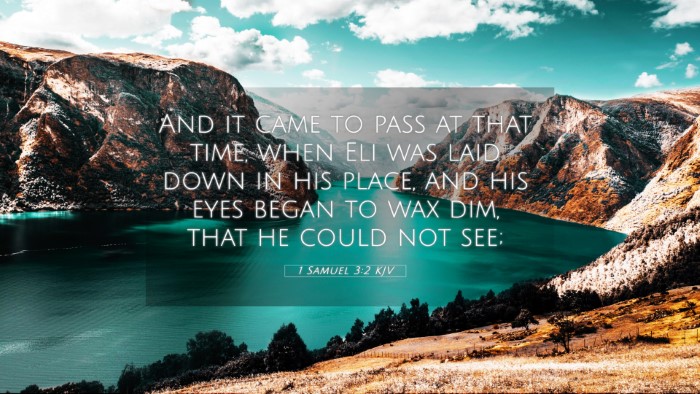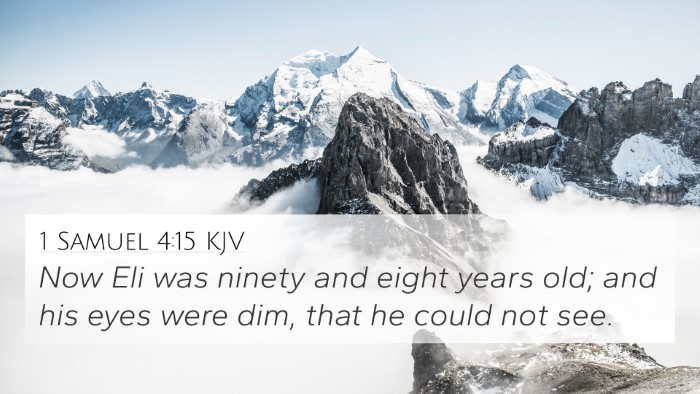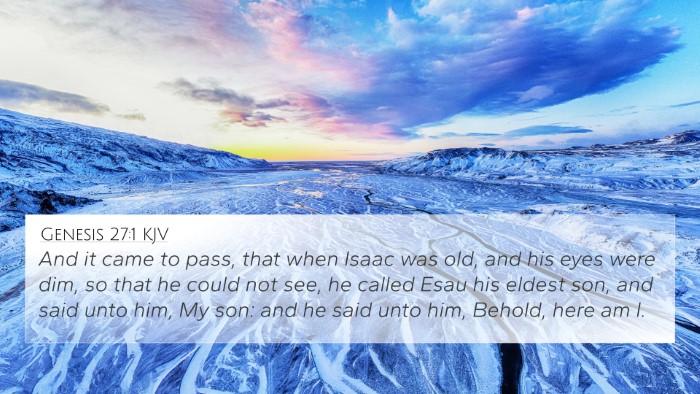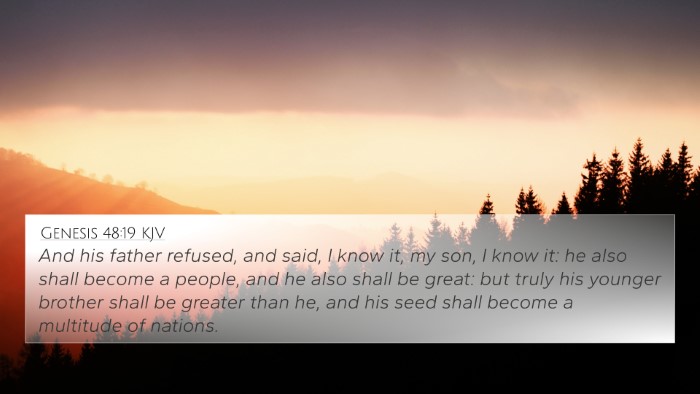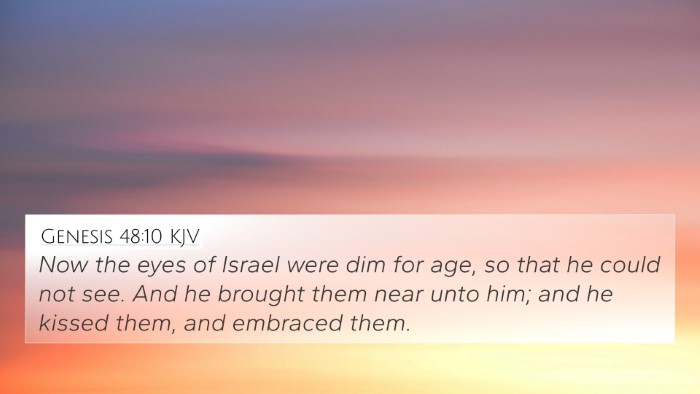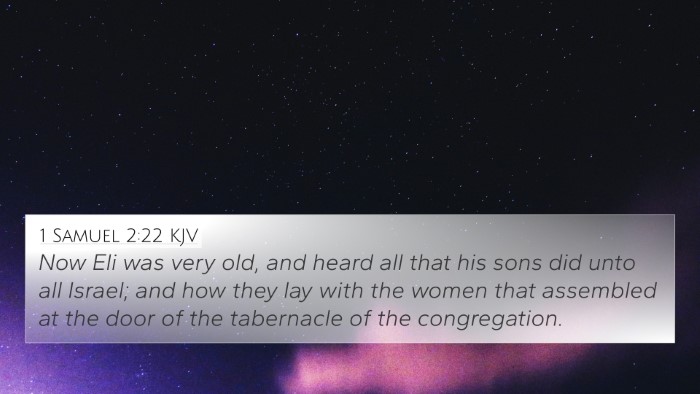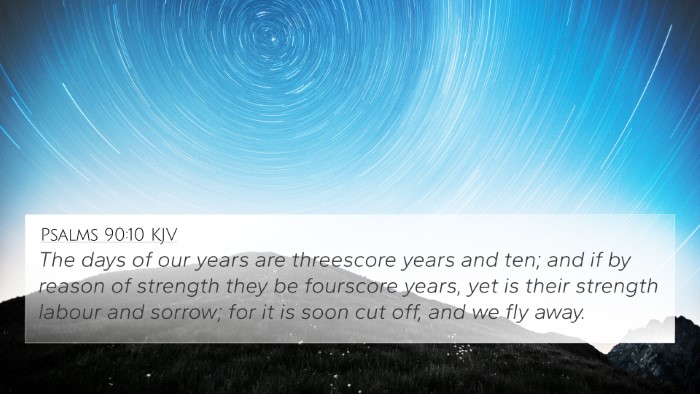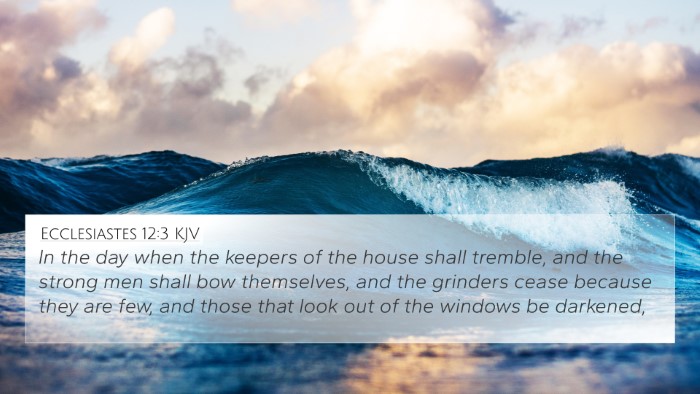Understanding 1 Samuel 3:2
Bible Verse: 1 Samuel 3:2 - "And it came to pass at that time, when Eli was laid down in his place, and his eyes began to wax dim, that he could not see."
Summary of Interpretation
This verse introduces a significant moment in the life of the Prophet Samuel. Eli, the high priest, is depicted as aging and losing his sight, which symbolizes the spiritual blindness of the nation of Israel at that time. The dimming of Eli's vision serves as a metaphor for the lack of divine communication that Israel had been experiencing. In the midst of this, God is preparing to call Samuel, highlighting the transition from the old order (represented by Eli) to the new order (represented by Samuel).
Commentary Insights
-
Matthew Henry:
Henry emphasizes the physical decline of Eli as a reflection of Israel's spiritual state. His inability to see not only hints at his literal blindness but also signifies the diminishing capacity to instruct and lead Israel effectively. As the high priest, his waning influence precedes God's new revelation through Samuel, indicating a divine shift in leadership.
-
Albert Barnes:
Barnes highlights that Eli's physical state is representative of the moral and spiritual condition of the entire nation. He notes that Eli's failure to properly manage his children and his duties reflects the broader issues facing Israel. This context sets the stage for God's intervention as He prepares to retrieve the reverence and order that had been lost.
-
Adam Clarke:
Clarke interprets Eli’s sleep as symbolic of inactivity in spiritual matters among the people. He points out that Eli’s dimmed vision is akin to the prophetic utterances becoming rare in Israel. This sets the narrative for the divine calling of Samuel, contrasting the old priestly order with the fresh infusion of prophecy that Samuel will bring.
Bible Cross-References
- 1 Samuel 2:12 - Describes the wickedness of Eli’s sons as a reflection of Eli’s spiritual failure.
- 1 Samuel 3:19-20 - The establishment of Samuel as a faithful prophet after God's message is delivered.
- Exodus 33:11 - God speaking to Moses as a precursor to individual calls like Samuel's.
- Isaiah 42:19 - A commentary on the blindness of leaders that parallels Eli's condition.
- Hebrews 5:4 - Discusses the appointment of priests, akin to Eli's position under scrutiny.
- Psalm 119:105 - Even amidst darkness, God’s word provides illumination, contrasting Eli's blindness.
- John 8:12 - Jesus as the light of the world, countering spiritual darkness as seen in Eli’s time.
Connections Between Bible Verses
1 Samuel 3:2 can be linked to various themes within scripture. The theme of divine calling, leadership, and the transition from spiritual decline to renewal is prevalent throughout the Bible. For instance, the contrasts between Eli and Samuel reflect the ongoing narrative of God's faithfulness amidst human failures. It also highlights a pattern found in the Bible of God raising leaders during times of darkness.
Linking Scriptures
- Cross-referencing Biblical texts: 1 Samuel 3:2 is linked to the recurrent motifs of light versus darkness, divine leadership, and the decline of moral authority.
- Thematic Bible verse connections: This verse connects to scriptures that address leadership dynamics, divine communication (like in 1 Kings 19:11-13), and the role of prophets.
- Scriptural cross-referencing: A deeper study through tools for Bible cross-referencing would expose how Eli's inactivity led to the necessity of Samuel's calling in God's plan.
Conclusion
1 Samuel 3:2 not only introduces a character and pivotal moment in biblical history but also lends itself to extensive analysis through the lens of thematic connections, prophetic leadership, and the call to spiritual awakening. As believers study this verse, they are invited to reflect on the broader implications of divine intervention in times of moral and spiritual decline, while also recognizing the significance of rising leaders like Samuel in God’s plan.
Further Study
For those interested in more profound insights, employing a comprehensive Bible concordance or cross-reference guide would be beneficial in exploring the intricate web of connections between various scriptures that discuss themes of leadership, vision, and divine communication.

